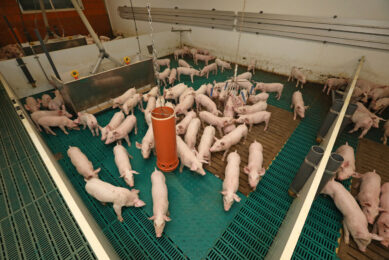Antibiotic use and resistance in people

There seems to be a constant barrage of attacks against antibiotic use in the pig industry at the moment by all sorts of lobbyists and government? Is this only a UK thing or is it the same in the rest of the EU?
Attacks have come from organic and vegetarian linked lobbyist groups, which I can understand but the UK government’s Department of Health and Department for Environment, Food and Rural Affairs (Defra) also seem to feel that the pig industry is responsible for much of the antimicrobial resistance problems that they are facing in human medicine – the so-called ‘Antibiotic Apocalypse’.
Antimicrobial use in man
I thought I would look at the antimicrobial use in man and see if pig use really does have that much impact. In a recent UK report (HM Government, 2015), it described the total antibiotics used in humans expressed as DDD (defined daily dose)/ 1,000 population/ day in 2013, in the EU. The lowest country was the Netherlands with 10.83 DDD (rank 1) and one of the highest was France at 30.14 DDD (rank 26). Denmark was intermediate at 16.4 DDD (rank 10), Germany at 15.79 DDD (rank 7) and UK (rank 16) was 21.46 DDD (see Table 1).
So what you might ask? If we take the UK figures 21.46/1000 equals 2.146% of the population are taking antibiotics each day. Normally, we would expect a course of antibiotics to be given for say 7 days, but because patients are often given repeated or prolonged courses and combinations of antibiotics the average patient course/ year is 21.5DDD based on the Danish figures (Danmap, 2015).
Percentage of UK population exposed
This means that in the UK 36.43% of the population would receive antibiotics each year or 36,430/100,000 population i.e. 36.43% of the population is exposing their bacteria mainly in the gut, following taking tablets etc., but other parts of the body too, to the direct selective pressure of antimicrobial resistance development.
In some countries like the Netherlands only 18.4% of the population are given antibiotics each year but in France over 51% of the population are treated. So why the huge difference (nearly 3 fold), you may ask? Are the medical profession and governments looking at this?
Transmission of resistance from pigs
If this is compared with the transmission of resistance from pigs and chickens to man, which I have recently calculated (Burch, 2016) based on EU reports of infections caused by Campylobacter spp, Salmonella spp and Escherichia coli and various major antimicrobial resistance genes of concern such as macrolides, fluoroquinolones and 3rd and 4th generation cephalosporins, which select for extended-spectrum beta lactamase (ESBL) enzyme-producing bacteria, we can see that much lower figures are involved. The results are summarised below (see Table 2).
In percentage terms, the combined indirect transference of critical resistance from pigs to man was 0.00025% or 0.25 people/100,000 population. Chicken transmission is higher at 0.01959% or 19.59 people/100,000 population or approximately 78 times greater.
Combined chicken and pigs indirect transmission
Therefore, combined chicken and pigs indirect transmission of resistance via the consumption of meat is only 0.01984% or 19.84 people/100,000 population in comparison with 36,430 people/100,000 population or only a 0.05% contribution to potential human resistance in comparison with the use of antibiotics directly in man.
The chicken results were a major surprise and demonstrate why we should look at this kind of data before we go forward with recommendations or oppressive legislation without knowing what we are doing. The ‘Precautionary Principle’ is no longer acceptable. The poultry industry has made a massive effort and successfully reduced the transmission of Salmonella Enteritidis by the use of vaccination and overall reported cases have fallen by 54%, as a result.
Campylobacter infections have increased
Unfortunately, Campylobacter infections have increased but it demonstrates that improved hygiene during the slaughter process is required for chickens to reduce their carcass contamination – not easy apparently. If governments spent more money on solving this problem, the disease issue and resistance issue would be solved together.
It is disappointing to think that so much time, effort and money is being thrown at the antimicrobial issues related to veterinary medicine and the agricultural use of antibiotics, when the primary problem would appear to be 99.95% associated with human medical use. It is highly unlikely that the current EU veterinary legislation going through will have any impact on the human ‘Antibiotic Apocalypse’, which we are told we are facing. One feels that the pig industry is just a convenient scapegoat – what do you think?











